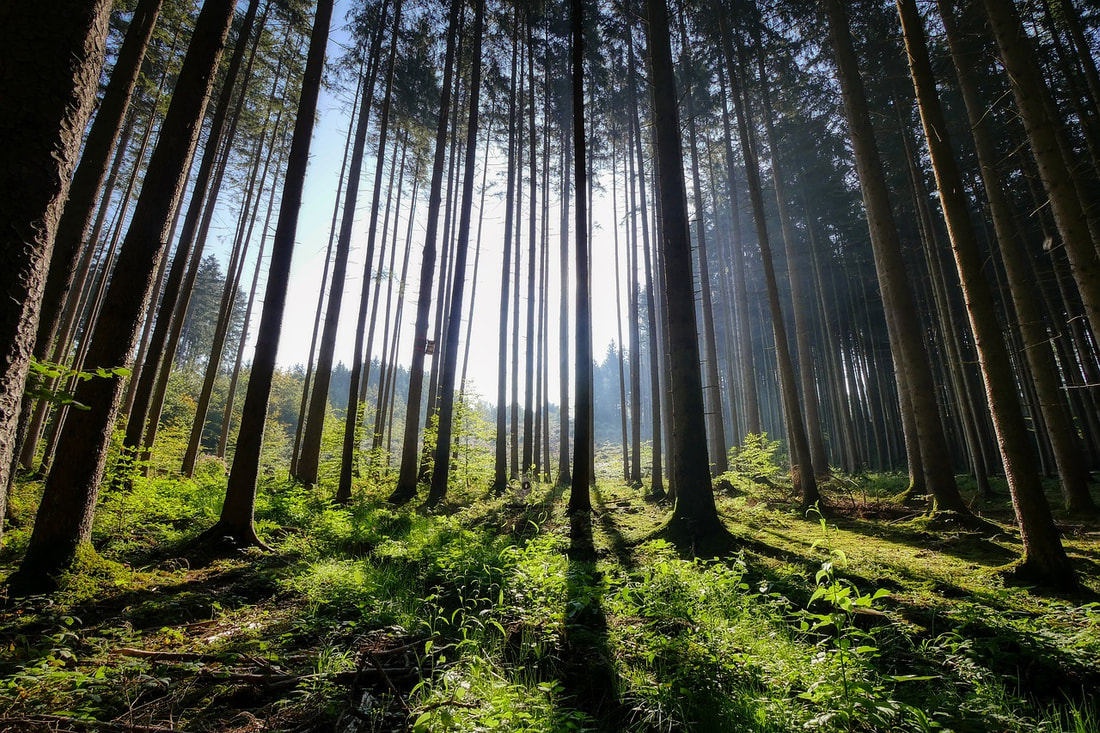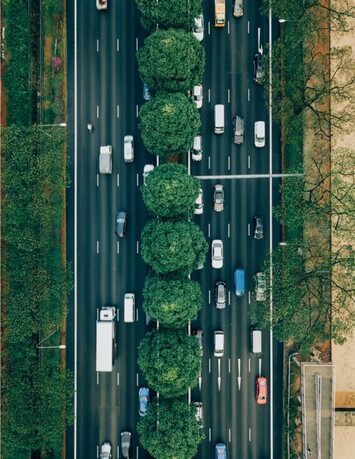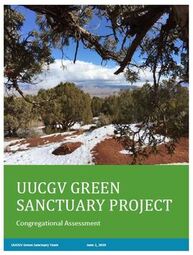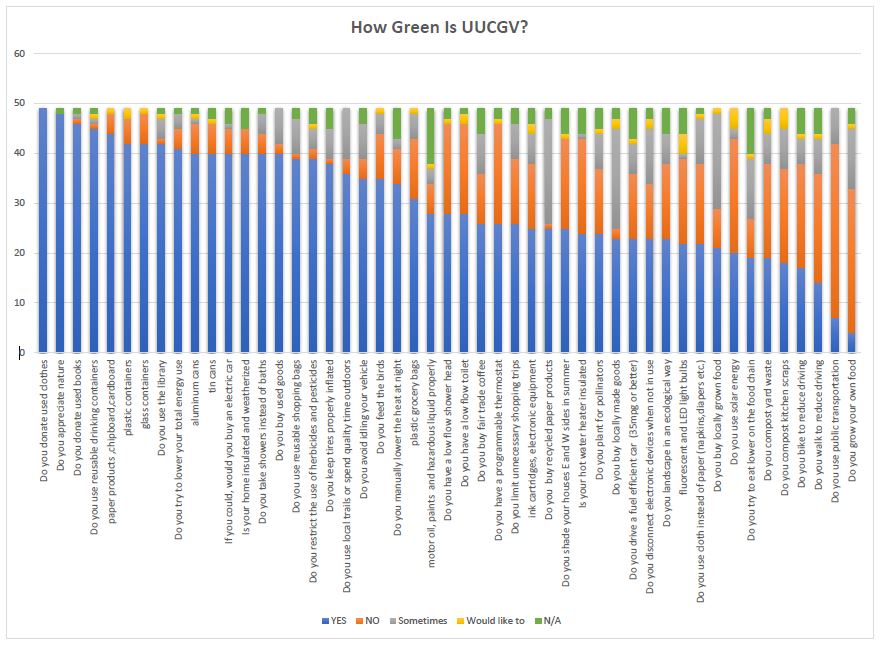Fast Fashion and the Case for Thrifting
by Aura Tusberg
Shopping for clothes can often feel emotionally exhausting if you are aware of the countless environmental and ethical implications of each and every item available. Of course, these problems extend into every facet of what we consume, far beyond just textiles, but for the purpose of this article we will prioritize the impacts of the fashion industry.
There are countless reasons to look for better ways to dress ourselves. Increasingly, clothes are made from synthetic/petroleum-based materials. Materials like polyester and acrylic require a high amount of resources (in terms of energy, water, chemicals, and raw materials) to produce, take hundreds of years to decompose if they are not recycled, and leach high volumes of microplastics into water supplies Impacts of plastics in clothes that find their way into aquatic ecosystems (Focht, 2022). These plastic textiles are responsible for about 10% of greenhouse gas emissions worldwide, are the largest microplastic polluters in waterways, and most end up in a landfill with fewer than 10 wears on average (Environment+Energy Leader, 2025; Shaw, 2024).
These challenges within the fashion industry are not helped by the meteoric rise of fast fashion brands that encourage constant high-levels of consumption (Shaw, 2024), with younger people often replacing their entire low-quality wardrobes seasonally to keep up with the latest trends. These fast-fashion brands, alongside even the most renowned luxury brands, face significant challenges regarding the ethics of their production. Despite about 60 million factory workers being employed worldwide in the clothing industry, it is estimated that less than 2% receive a living wage for their work, with wages dropping by about 11% since the COVID-19 pandemic (Helm, 2025). Because of their ubiquity among younger generations, fast-fashion brands are becoming increasingly common on the racks in thrift stores (Environment+Energy Leader, 2025).
Thrifting for our clothes (and other consumer goods) is one of the most readily-available, accessible, and tangible ways we can reduce the negative impacts of our consumption. Buying second-hand compared to buying a brand new garment results in 8.41lbs in CO2 emission savings, 16.48kWh of energy savings, and 88.89 gallons of water savings (Shaw, 2024). Thrifting for clothing results in less clothing ending up in landfills and reduces the chemical pollution of buying brand new clothing made from chemically-treated natural textiles like cotton or linen (Mullen & Huun, 2024). Thrifting helps consumers save money, maintain an updated style, pay lower prices for higher-quality goods, and engage in a socially responsible solution to a significant environmental problem (Mullen & Hunn, 2024).
Thrifting is not without its own considerations. Goodwill, one of the largest second-hand chains in the U.S., receives about 6 billion pounds of donations in a year (Sparkman, 2024). With the rise in fast-fashion brands being donated to thrift stores, it is critical to be discerning with the clothing you purchase, seeking out more durable and high-quality brands (Sparkman, 2024). There is also value in understanding the full life-cycle of thrift store clothing. Unwanted donations in thrift stores are often sent to salvage dealers that are sold for a profit in developing nations, contributing to an industry that many lower-income individuals depend on internationally (Sparkman, 2024).
Beyond thrift stores, there are countless ways to improve the impact of our clothing. With many items being worn ten times or less before going to landfills, one key solution is shopping from our own wardrobe and reducing what we buy in the first place. Other options include clothing swaps with friends/peers, donating directly to homeless shelters or domestic violence shelters in lieu of thrift stores, repairing/repurposing old clothing for items like cleaning clothes, and learning how to repair clothing so that it lasts longer (Mullen & Hunn, 2024).
Grand Junction Second-Hand Stores: A Local Thrifting Guide
arc Thrift Stores
2830 North Ave, Grand Junction, CO 81501
https://arcthrift.com/
(970) 360-6616
Community Thrift Shop GJT
3227 I-70BL, Clifton, CO 81520 (Peach Tree Center)
https://www.communitythriftglenwood.com/
(970) 319-2721
“Experience thrift shopping at its best! We provide the largest selection of high-quality, affordable
merchandise in the valley. Discover our collection and enjoy unmatched value!”
The Encore Shoppe Where UUCGV has an account. If you bring in an item to sell, the revenue goes to UUCGV.
1909 N 1st St, Grand Junction, CO 81501
https://encoreshoppe.com/
“At The Encore Shoppe, we are dedicated to providing a sustainable shopping experience. Our
mission is to connect our community through quality consignment of clothing and home goods.”
Fashion Junkie
710 N 1st St, Grand Junction, CO 81501
(970) 245-5936
A small local second-hand store offering high-quality clothing; Fashion Junkie also provides small
reimbursement for used clothing donations.
Goodwill Store & Donation Center
630 24 1/2 Rd, Grand Junction, CO 81505
https://goodwillcolorado.org/shop/locations/
(970) 243-1745
Long-standing nonprofit chain with a range of pre-owned clothing, furniture, housewares & more.
Heirlooms For Hospice
635 Main St, Grand Junction, CO 81501
https://www.heirloomsforhospice.org/
(970) 254-8556
“When you shop at Heirlooms you are also giving back to your community. All proceeds from our
stores support the programs of HopeWest, a nonprofit that through creativity, volunteerism, and
philanthropy, profoundly changes the experiences of aging, illness, and grief – one family at a time.”
Once Upon A Child - Grand Junction
2454 Hwy 6 & 50 Suite 111B, Grand Junction, CO 81505
onceuponachildgrandjunction.com
(970) 243-0566
Chain operation that buys & sells gently used items for children, including clothes, shoes & toys.
Runway Fashion Exchange
2454 Hwy 6 & 50 Suite 110, Grand Junction, CO 81505
runwayfashionexchange.com
(970) 712-5333
“At Runway we have the brands you are looking for and we have prices that beat every retail store in the mall. Let everyone else pay full price. Come on in and experience what it is like to get double and triple the clothing for the same price.”
Salvation Army
1155 N. 4th St, Grand Junction, CO 81501
grandjunction.salvationarmy.org
(970) 242-3343
“When you shop at our family stores or donate the things you no longer need, you can make a
difference in the lives of countless people in your community. From home goods to electronics to
children’s clothing and vacuum cleaners, our family thrift stores offer deeply discounted, like new items in a clean and organized shopping environment. The best part? You can score great deals and support The Salvation Army at the same time! All sales directly fund local, life-giving programs and services.”
Book review: Collapse by Jared Diamond
by Angeline Barrett
I was impressed by Jared Diamond’s book “Guns, Germs & Steel” as a unique view of history that I never got in
my school years. So when I saw a book that studied the “collapse” of civilizations, I was intrigued. This book is almost
too thorough in detail, but I read all 575 pages and was fascinated.
Diamond carefully lays out the facts behind several familiar collapses in history and draws conclusions that surmise how that happened. Most simply, they had used up their only resources and could not support the life they once had. So they left the area or starved to death.
He starts with Montana, USA, so you don’t think it couldn’t happen to us. Montana has not collapsed, of course,
but has some of the characteristics outlined by him as factors in the down-grading or demise of a civilization. He
describes five factors that seem to accompany failing civilizations. They are
Collapse then proceeds to illustrate these concepts with analysis of several well-known ancient civilizations that failed – Easter Island, the Mayan Empires, and Norse Greenland. All had one or more of the five characteristics. To teach us that these failures are not inevitable, he tells us about countries that came close to collapsing but were able to find ways to recover what they had lost in time to save the society. New Guinea highlands has had sustainable agriculture for 7000 years. Tikopia and Tonga, South Sea Islands similar to Easter Island are sustainable after experiencing similar degradations to their environments. Japan, now a First World country, realized that they needed to re-establish their forests and over two centuries according to the book, “achieved a stable population and more nearly sustainable resource consumption rates”.
Finally, he gives us some conclusions he reached about why the failed civilizations couldn’t or wouldn’t see
what was happening before it was too late to save themselves. Here he concludes there were several common
reasons among the failures. They were:
Quoting Paul R. Ehrlich, a reviewer of the book, “for the first time in history humanity is faced with a global
ecological collapse”. Though the political direction our country has taken this year is surely a setback, Diamond helps
us realize that if we have the will to prevent “collapse”, we can.
Our children are depending on us.
my school years. So when I saw a book that studied the “collapse” of civilizations, I was intrigued. This book is almost
too thorough in detail, but I read all 575 pages and was fascinated.
Diamond carefully lays out the facts behind several familiar collapses in history and draws conclusions that surmise how that happened. Most simply, they had used up their only resources and could not support the life they once had. So they left the area or starved to death.
He starts with Montana, USA, so you don’t think it couldn’t happen to us. Montana has not collapsed, of course,
but has some of the characteristics outlined by him as factors in the down-grading or demise of a civilization. He
describes five factors that seem to accompany failing civilizations. They are
- Damage to their environment, such as destroying forests, over-fishing or hunting the animals they eat, using too much of their fresh water supplies. If the environment is already fragile, these actions cause faster degradation.
- Climate change that makes life more difficult for the population.
- Hostile neighbors causing expensive wars that ultimately everyone loses.
- Decreased support by friendly neighbors or trade partners who find less advantage in dealing with a failing land.
- Societal responses to problems – no experience, understanding or misconstruing solutions to what is occurring.
Collapse then proceeds to illustrate these concepts with analysis of several well-known ancient civilizations that failed – Easter Island, the Mayan Empires, and Norse Greenland. All had one or more of the five characteristics. To teach us that these failures are not inevitable, he tells us about countries that came close to collapsing but were able to find ways to recover what they had lost in time to save the society. New Guinea highlands has had sustainable agriculture for 7000 years. Tikopia and Tonga, South Sea Islands similar to Easter Island are sustainable after experiencing similar degradations to their environments. Japan, now a First World country, realized that they needed to re-establish their forests and over two centuries according to the book, “achieved a stable population and more nearly sustainable resource consumption rates”.
Finally, he gives us some conclusions he reached about why the failed civilizations couldn’t or wouldn’t see
what was happening before it was too late to save themselves. Here he concludes there were several common
reasons among the failures. They were:
- The society failed to anticipate a problem or perceive a problem before it was upon them.
- Societies that don’t attempt to solve the problems once they realize them may be because they don’t understand the issues behind their failure. Their history has no experience of this type of problem
- The core values of the society have become outdated or ineffectual so that their problems aren’t addressed in a helpful way. Religion is often the cause of this.
- A small group of “elite” people make the decisions to the detriment of the rest of the population.
Quoting Paul R. Ehrlich, a reviewer of the book, “for the first time in history humanity is faced with a global
ecological collapse”. Though the political direction our country has taken this year is surely a setback, Diamond helps
us realize that if we have the will to prevent “collapse”, we can.
Our children are depending on us.
In living into our 7th Principle, the mission of the Green Team is to guide ourselves, our congregation and our community into a deeper awareness, understanding, and commitment to preserve and protect the “interdependent web of all existence” of which we are part.
"2040" Film Screening and Discussion
Sunday, February 23rd at 2:00 p.m.
Unitarian Universalist Congregation of the Grand Valley (UUCGV)
536 Ouray Avenue
UUCGV and Western Colorado Alliance-Mesa County will be co-sponsoring a showing and discussion of a film espousing sustainability at a time of climate change. "2040" is an award-winning Australian director's documentary of small actions around the world that provide optimism for his daughter's future. The film presents both existing and suggested actions in the realms of energy, agriculture, education and transportation. All of these are at the local community level. Admission to the event is free, but donations will be welcomed. Refreshments to be served after the discussion period. For more info call (970) 250-5413.
Sunday, February 23rd at 2:00 p.m.
Unitarian Universalist Congregation of the Grand Valley (UUCGV)
536 Ouray Avenue
UUCGV and Western Colorado Alliance-Mesa County will be co-sponsoring a showing and discussion of a film espousing sustainability at a time of climate change. "2040" is an award-winning Australian director's documentary of small actions around the world that provide optimism for his daughter's future. The film presents both existing and suggested actions in the realms of energy, agriculture, education and transportation. All of these are at the local community level. Admission to the event is free, but donations will be welcomed. Refreshments to be served after the discussion period. For more info call (970) 250-5413.

The Green Team meets monthly to exchange ideas and provide tips for leaving a smaller footprint. If you’re interested in learning more about or joining our group email green@grandvalleyuu.org or reach out to Ann Barrett at angelinebarrett2@gmail.com or 970-241-6006.
All are welcome!
All are welcome!
Zoom in to the next Green Team meeting the 1st Thursday of the month at 7:00pm HERE.
The Green Team was gifted a link to a useful resource for information about food waste and composting. We are proud to post in on our website for all to see!
|
Green Team member Angeline Barrette recently did a book review on Restoring the Soul of the World - Our Living Bond with Nature's Intelligence by David Fideler. Read her full book review here.
|
Journey to a Green Sanctuary ~ December 2022
Stepping Toward Light in Dark, Uncertain Times
Measuring and Understanding Our Carbon Footprint
As it turns out, carrying out our Green Team mission of “guiding ourselves, our congregation and our community into a deeper awareness, understanding and commitment to preserving and protecting the ‘interdependent web of all existence’ of which we are part” might seem hopelessly idealistic as climate challenges intensify and policy responses around the world come up short. Our industrial impact on the planetary biosphere over the last 300 years has been destructive and deep.
One might well ask: Is the challenge too complex to address and the time too short to respond in a meaningful way? Perhaps. We won’t really know, will we, until we –and the millions like us around the world—try.
But how? Our mission statement suggests a path: gain a deeper awareness and a deeper understanding of the climate challenges we face. Then decide what steps we can take, however small, to meeting the challenges, however big. Because doing something out of hope is so much better than doing nothing out of despair. Because doing something is a duty that our 7th principle demands of us.
Because doing something is so much better for us, our children, our community, our world, our blue boat home.
“Fine!”, you say. “How do we start?” Good question, which we answer by suggesting that first, you calculate your own carbon footprint, e.g., the tons of CO2 equivalent emissions you generate in your travel, home life, food you eat, goods you buy and services you use. Then, by us calculating the collective carbon footprint of our Congregation. And finally, by us and others calculating the collective carbon footprint of our community and finding ways to reduce it, steadily, systematically.
Why the emphasis on our collective footprints? Because the magnitude of the climate challenges we face –and the power of those resisting change and supporting the status quo—are great. They demand that we speak with a strong, informed, collective voice that our leaders at all levels will hear.
By learning about our carbon footprints, we will learn about our connections to the Earth and its biosphere, and begin to understand our connections to each other in new ways. We will learn just how interdependent we truly are. And maybe, just maybe, we will learn how to meet this challenge together.
So here are some initial steps out of the darkness that we invite you to take with us on the Green Team. With each step we will become aware, we will begin to understand our role(s) in the great ecological drama of our times. We will learn what we can do in small ways, individually. And what we can do in large ways, collectively. We will learn how to advocate effectively for changes in local policy, economy and society as citizens as well as consumers. We will learn how to “preserve and protect the interdependent web of existence” from the ground up as well as the top down. We will describe each step in more detail in January and then take them, one by one, together. Here they are:
Step 1 - Use the Cool Climate Calculator developed by the University of California, Berkeley to set up and calculate your own carbon footprint online. The Green Team has developed an instruction guide to help you.
Step 2 - Extract the summary data from your online carbon footprint calculation and populate a Cool Climate Survey sheet with the data. The Green Team has developed a Survey sheet for this purpose.
Step 3 - Send a copy of your filled-in Cool Climate Survey sheet to the Green Team. We will anonymize the data and add it to our master Cool Climate Survey sheet.
Step 4 - The Green Team will analyze the results and report our findings back to you and the rest of the Congregation.
Step 5 - The Green Team will then guide you and the rest of the Congregation into a deeper understanding of the data and their implications for all of us and our larger community.
Step 6 - Based on the results of Step 5, the Green Team will suggest action steps we can take individually and collectively to respond to the climate challenges we face.
Yes, the challenges are huge. Yes, there is much to explore. Yes, there is much to learn. But what if we could actually do something meaningful? Just imagine how exciting that would be!
See you all next month!
One might well ask: Is the challenge too complex to address and the time too short to respond in a meaningful way? Perhaps. We won’t really know, will we, until we –and the millions like us around the world—try.
But how? Our mission statement suggests a path: gain a deeper awareness and a deeper understanding of the climate challenges we face. Then decide what steps we can take, however small, to meeting the challenges, however big. Because doing something out of hope is so much better than doing nothing out of despair. Because doing something is a duty that our 7th principle demands of us.
Because doing something is so much better for us, our children, our community, our world, our blue boat home.
“Fine!”, you say. “How do we start?” Good question, which we answer by suggesting that first, you calculate your own carbon footprint, e.g., the tons of CO2 equivalent emissions you generate in your travel, home life, food you eat, goods you buy and services you use. Then, by us calculating the collective carbon footprint of our Congregation. And finally, by us and others calculating the collective carbon footprint of our community and finding ways to reduce it, steadily, systematically.
Why the emphasis on our collective footprints? Because the magnitude of the climate challenges we face –and the power of those resisting change and supporting the status quo—are great. They demand that we speak with a strong, informed, collective voice that our leaders at all levels will hear.
By learning about our carbon footprints, we will learn about our connections to the Earth and its biosphere, and begin to understand our connections to each other in new ways. We will learn just how interdependent we truly are. And maybe, just maybe, we will learn how to meet this challenge together.
So here are some initial steps out of the darkness that we invite you to take with us on the Green Team. With each step we will become aware, we will begin to understand our role(s) in the great ecological drama of our times. We will learn what we can do in small ways, individually. And what we can do in large ways, collectively. We will learn how to advocate effectively for changes in local policy, economy and society as citizens as well as consumers. We will learn how to “preserve and protect the interdependent web of existence” from the ground up as well as the top down. We will describe each step in more detail in January and then take them, one by one, together. Here they are:
Step 1 - Use the Cool Climate Calculator developed by the University of California, Berkeley to set up and calculate your own carbon footprint online. The Green Team has developed an instruction guide to help you.
Step 2 - Extract the summary data from your online carbon footprint calculation and populate a Cool Climate Survey sheet with the data. The Green Team has developed a Survey sheet for this purpose.
Step 3 - Send a copy of your filled-in Cool Climate Survey sheet to the Green Team. We will anonymize the data and add it to our master Cool Climate Survey sheet.
Step 4 - The Green Team will analyze the results and report our findings back to you and the rest of the Congregation.
Step 5 - The Green Team will then guide you and the rest of the Congregation into a deeper understanding of the data and their implications for all of us and our larger community.
Step 6 - Based on the results of Step 5, the Green Team will suggest action steps we can take individually and collectively to respond to the climate challenges we face.
Yes, the challenges are huge. Yes, there is much to explore. Yes, there is much to learn. But what if we could actually do something meaningful? Just imagine how exciting that would be!
See you all next month!
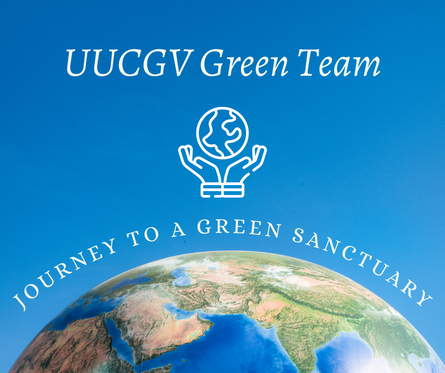
Green Team Tip of the Month - Makin' Do
· Paper towel tubes make good storage devices for all those loose cords.
Label as desired.
· Paper egg cartons are handy for storing little objects, such as jewelry findings and earrings, washers and bolts, also as seed starters. When ready, plant the whole dampened nest cup. It'll dissolve in the soil.
· An old bicycle wheel (cleaned) hung from the ceiling makes a funky pots and pans holder.
· Waxed cereal box inserts are useful for crushing crackers or flattening chicken breasts without a mess.
· Also, by snipping off a corner they make great piping bags for frosting.
· Empty coffee cans such as Folgers make secure storage bins for treats, flour, or to hide your cookie stash.
· Use an old disposable razor for de-fuzzing a sweater.
· Smelly shoes can be improved by stuffing them with wadded up newspaper to absorb those odors. Wads of newspapers can also be used for mail or moving packing .
· In your garden, make plant markers out of old spoons or terra pot shards.
· Your garden rake has a broken handle? Use those tines to hang up tools, kitchen utensils, even wine glasses.
· Have a vintage suitcase? Remove the top and line with towels to make a comfy and trendy pet bed.
· For a unique earrings display, use a pretty picture frame, remove the glass and fasten wires across the back for hanging earrings or other treasures.
· Don't throw out that old entertainment cabinet. It can be reused for storage or, with paint and stickers, to make a fun "kitchen" for your tots.
· Paper towel tubes make good storage devices for all those loose cords.
Label as desired.
· Paper egg cartons are handy for storing little objects, such as jewelry findings and earrings, washers and bolts, also as seed starters. When ready, plant the whole dampened nest cup. It'll dissolve in the soil.
· An old bicycle wheel (cleaned) hung from the ceiling makes a funky pots and pans holder.
· Waxed cereal box inserts are useful for crushing crackers or flattening chicken breasts without a mess.
· Also, by snipping off a corner they make great piping bags for frosting.
· Empty coffee cans such as Folgers make secure storage bins for treats, flour, or to hide your cookie stash.
· Use an old disposable razor for de-fuzzing a sweater.
· Smelly shoes can be improved by stuffing them with wadded up newspaper to absorb those odors. Wads of newspapers can also be used for mail or moving packing .
· In your garden, make plant markers out of old spoons or terra pot shards.
· Your garden rake has a broken handle? Use those tines to hang up tools, kitchen utensils, even wine glasses.
· Have a vintage suitcase? Remove the top and line with towels to make a comfy and trendy pet bed.
· For a unique earrings display, use a pretty picture frame, remove the glass and fasten wires across the back for hanging earrings or other treasures.
· Don't throw out that old entertainment cabinet. It can be reused for storage or, with paint and stickers, to make a fun "kitchen" for your tots.
Click below to view the Green Team's March Newsletter article references
| march_2022_green_team_article_references.pdf | |
| File Size: | 145 kb |
| File Type: | |
Click below to download or print a handout to put on your fridge or to bookmark on your device with info about recycling.
| Recycling Locations in the Grand Valley | |
| File Size: | 1534 kb |
| File Type: | |
There are 5 stages to UUA GS Accreditation
UUCGV is now in Stage 3:
|
Stage 3: Define 12 projects in 4 areas building on existing UUCGV team interests, missions and goals:
* We are seeking ideas for these 12 projects, please email green@grandvalleyuu.org with your ideas * |
| Green Sanctuary Action Plan | |
| File Size: | 575 kb |
| File Type: | |
Rethinking Transportation
| UUCGV Green Sanctuary Project Congressional Assessment.pdf | |
| File Size: | 1606 kb |
| File Type: | |
| How Green Is UUCGV | |
| File Size: | 223 kb |
| File Type: | |



